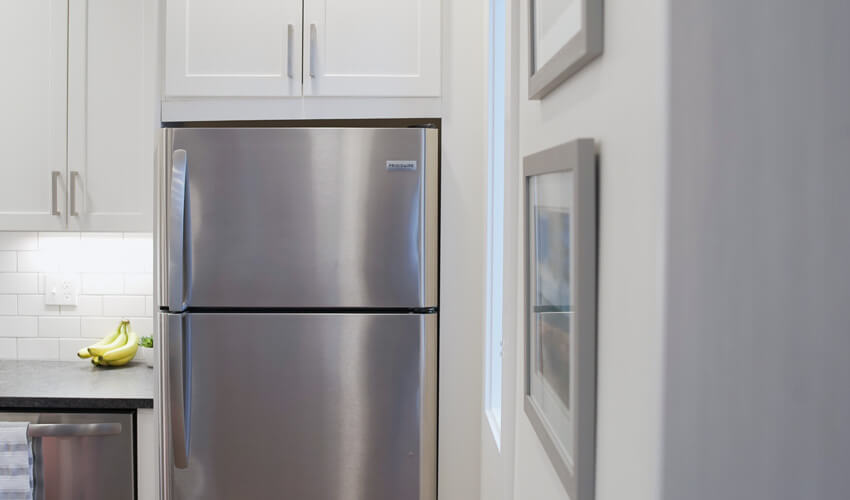Can You Put the Refrigerator Next to the Wall?

Among the many considerations you will need to make before purchasing a new refrigerator, size is one of the most important. Many major appliances need adequate clearance and careful placement for enhanced performance, safety, and efficiency, so it's important to factor in the distance between the unit and the wall before you buy. If you're wondering just how much space you need to leave between the refrigerator and the wall you can count on the knowledgeable experts at Mr. Appliance® for the best advice and for fast, reliable appliance repair.
Why Do I Need to Leave Room Between the Refrigerator and the Wall?
Refrigerator design and engineering have evolved over the last few decades, and one of the most significant changes has been the relocation of the coils from the back of the unit to the base. Rear placement provided a more natural spacing between the coils and the wall to promote air circulation and allow the heat that was generated to dissipate, but with the new configuration, placing the refrigerator next to wall spaces that are too close in proximity can hamper airflow and prevent the heated coils from cooling down.
Without adequate ventilation, the refrigerator can overheat, and the unit may display immediate symptoms or slowly deteriorate over the course of time with issues that may include:
- Insufficient cooling
- Unusual or loud operation
- Excessive rise in energy costs
- Condenser or compressor issues or failure
- System failure
- Frequent repairs
- And more
How Close Can I Place My Refrigerator Next to Walls?
Refrigerators today are larger than their predecessors due to a need for increased capacity, allowances for side-by-side design, and to accommodate larger freezer space on the top or bottom. In older homes, new appliances may no longer fit into existing openings or leave as much space surrounding it as with earlier models. In order to allow for adequate ventilation of the compressor, measure the refrigerator with the following in mind:
- Side Clearance – Plan for between one-half inch to one inch of clearance on both sides of the unit.
- Rear Clearance – Allow between one to two inches of space at the rear of the refrigerator for proper airflow.
- Top Clearance – Ensure there is a minimum of one-half inch to one inch of clearance on top of the unit.
Tips to Prolong the Lifespan of Your Refrigerator
You can help to maximize the efficiency of your appliance, reduce refrigerator energy consumption, and avoid most major repairs, with these tips:
- Keep it cool. Do not place the refrigerator next to the stove or dishwasher, or in direct sunlight where the additional heat can force it to work harder and shorten the lifespan of the components.
- Clean regularly. Clean the seals and interior routinely and vacuum the front grill of the unit each month to remove dust, pet hair, and debris.
- Declutter. Distribute the food evenly throughout the interior to allow for proper airflow.
- Adjust the temperature. The optimal temperature range for refrigerator operation and efficiency is between 60 and 80 degrees.
- Hire a professional. Call the experts at Mr. Appliance at the first sign of an issue for expert diagnosis and refrigerator repair.
For all your appliance repair needs you can trust the experienced professionals at Mr. Appliance, servicing all brands, types, makes, and models of refrigerators. Call us to schedule an appointment or contact us online today!
 Click to call
Click to call


